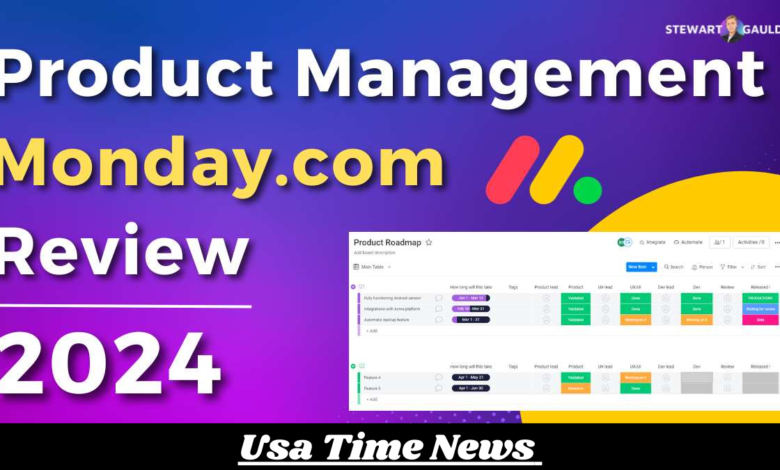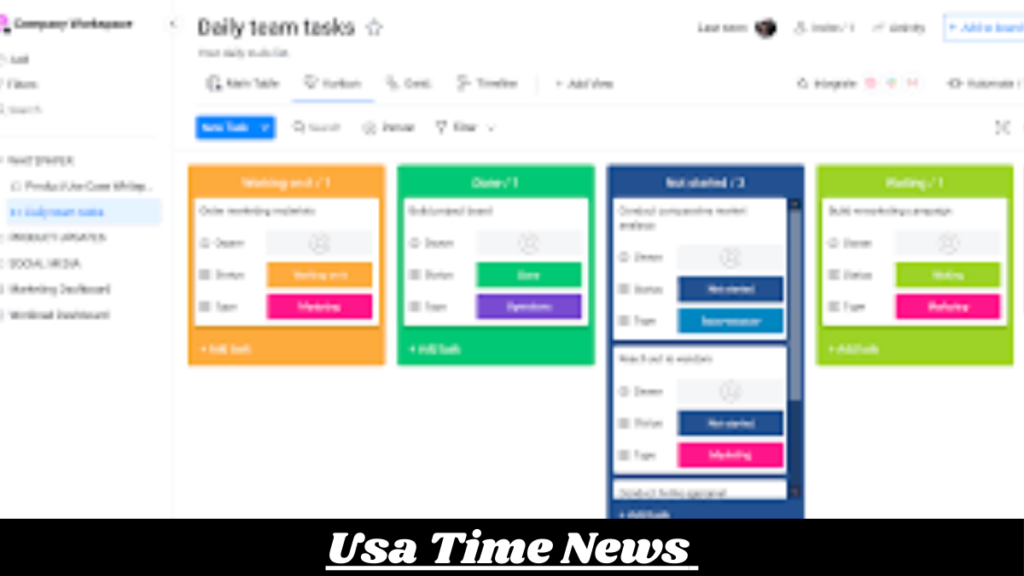How to Master Product Management Mondays1

Table of Contents
The fast-paced world of product management, staying organized, motivated, and productive is crucial for success. Mondays can set the tone for the entire week, making it essential to have a structured approach to kickstart your week effectively. This article explores the concept of “Product Management Monday,” offering strategies, tips, and best practices to make the most of the first day of the week and set yourself up for a successful and productive week ahead.
Understanding Product Management Monday
What is Product Management Monday?
Product Management Monday is a concept that emphasizes the importance of starting the week with a focused and strategic approach. It involves setting clear goals, prioritizing tasks, and organizing your workload to ensure a productive and efficient week. By dedicating Mondays to planning and strategizing, product managers can streamline their processes, improve collaboration, and achieve their objectives more effectively.
The Importance of a Structured Start
A structured start to the week is essential for several reasons:
- Clarity and Focus: Starting the week with a clear plan helps you stay focused on your priorities and avoid distractions. It provides a roadmap for the week, making it easier to manage your time and resources effectively.
- Improved Productivity: Having a well-organized schedule and defined goals boosts productivity. It allows you to tackle tasks systematically and ensures that important projects receive the attention they deserve.
- Reduced Stress: A structured start reduces stress by eliminating the chaos and uncertainty that can arise from a lack of planning. It provides a sense of control and confidence, helping you approach your work with a positive mindset.
- Enhanced Collaboration: Planning your week collaboratively with your team fosters better communication and alignment. It ensures that everyone is on the same page and working towards common goals.
Strategies for an Effective Product Management Monday

1. Review and Reflect
Start your Monday by reviewing the previous week’s accomplishments and challenges. Reflect on what worked well and identify areas for improvement. This reflection helps you learn from past experiences and apply those lessons to the current week.
- Product Management Monday
- Identify Obstacles: Identify any obstacles or challenges you faced and brainstorm solutions to overcome them. This proactive approach helps you address potential issues before they escalate.
2. Set Clear Goals
Define clear and achievable goals for the week. Break down larger projects into smaller, manageable tasks and prioritize them based on their importance and urgency.
- SMART Goals: Use the SMART criteria (Specific, Measurable, Achievable, Relevant, Time-bound) to set your goals. This framework ensures that your goals are well-defined and attainable.
- Prioritize Tasks: Prioritize your tasks using the Eisenhower Matrix, which categorizes tasks into four quadrants based on their urgency and importance. Focus on high-priority tasks first.
3. Plan Your Schedule
Create a detailed schedule for the week, Product Management Monday time blocks for each task Product Management Monday activity. This structured approach helps you stay organized and ensures that you allocate sufficient time for important tasks.
- Time Blocking: Use time blocking to allocate specific time slots for different tasks and activities. This technique helps you stay focused and avoid multitasking.
- Buffer Time: Include buffer time in your schedule to accommodate unexpected interruptions and delays. This flexibility ensures that you stay on track even if things don’t go as planned.
4. Conduct Team Meetings
Schedule regular team meetings on Mondays to align with your team and discuss the week’s goals and priorities. These meetings foster collaboration and ensure that everyone is working towards common objectives.
- Stand-Up Meetings: Conduct short stand-up meetings to discuss progress, challenges, and priorities. Keep these meetings brief and focused to maximize productivity.
- Collaborative Planning: Involve your team in the planning process to gather their input and Product Management Monday. This collaborative approach fosters a sense of ownership Product Management Monday accountability.
5. Update Your Product Roadmap
Review and update your product roadmap to ensure that it reflects the current priorities and goals. This roadmap serves as a strategic guide for your team’s efforts and helps you stay aligned with your long-term vision.
- Regular Updates: Update your roadmap regularly to reflect changes in priorities, market conditions, and customer feedback. This dynamic approach ensures that your roadmap remains relevant and actionable.
- Stakeholder Communication: Communicate any changes to your roadmap with key stakeholders to keep them informed and aligned with your plans.
6. Focus on Continuous Improvement
Embrace a mindset of continuous improvement by seeking feedback and looking for ways to enhance your processes and workflows. This proactive approach helps you stay ahead of the curve and deliver better results.
- Feedback Loops: Establish feedback loops with your team, customers, and stakeholders to gather insights and identify areas for improvement. Use this feedback to refine your strategies and processes.
- Iterative Approach: Adopt an iterative approach to product development, making incremental improvements based on feedback and data. This agile mindset helps you respond quickly to changes and deliver value continuously.
Tips for a Productive Product Management Monday
1. Minimize Distractions
Create a distraction-free environment to stay Product Management Monday on your tasks and goals. Minimize interruptions and set boundaries to protect your time and concentration.
- Designate a Workspace: Set up a dedicated workspace that is free from distractions. This physical separation helps you stay focused and productive.
- Turn Off Notifications: Disable non-essential notifications on your devices to avoid interruptions. Use tools like “Do Not Disturb” mode to create a distraction-free environment.
2. Practice Time Management
Effective time management is crucial for staying organized and productive. Use techniques like the Pomodoro Technique or time blocking to manage your time efficiently.
- Pomodoro Technique: Break your work into focused intervals (usually 25 minutes) followed by short breaks. This technique helps you maintain focus and avoid burnout.
- Task Batching: Group similar tasks together and tackle them in batches. This approach minimizes context switching and improves efficiency.
3. Stay Organized
Use tools and systems to stay organized and keep track of your tasks and projects. Digital tools like project management software, calendars, and to-do lists can help you stay on top of your workload.
- Project Management Software: Use tools like Trello, Asana, or Jira to manage your projects and tasks. These platforms provide a centralized place to track progress and collaborate with your team.
- To-Do Lists: Create daily to-do lists to outline your tasks and priorities. Check off completed tasks to stay motivated and track your progress.
4. Prioritize Self-Care
Taking care of your well-being is essential for maintaining productivity and focus. Prioritize self-care activities like exercise, healthy eating, and adequate rest to stay energized and motivated.
- Exercise: Incorporate regular physical activity into your routine to boost your energy levels and reduce stress. Even a short walk or quick workout can make a difference.
- Healthy Eating: Fuel your body with nutritious meals and snacks to maintain your energy levels and concentration. Avoid excessive caffeine and sugar, which can lead to energy crashes.
5. Reflect and Adjust
At the end of the day, take time to reflect on your accomplishments and challenges. Use this reflection to adjust your plans and strategies for the rest of the week.
- Daily Reflection: Spend a few minutes reflecting on your day and assessing your progress. Identify what went well and what could be improved.
- Plan Adjustments: Use your reflection to make any necessary adjustments to your plans and schedule. This proactive approach helps you stay flexible and responsive to changes.
Conclusion
Product Management Monday is more than just a concept; it’s a strategic approach to kickstarting your week with focus, clarity, and purpose. By dedicating time to planning, setting clear goals, and organizing your workload, you can set yourself up for a successful and productive week. Embrace the strategies and tips outlined in this article to make the most of your Mondays and achieve your product management objectives with confidence and efficiency.



